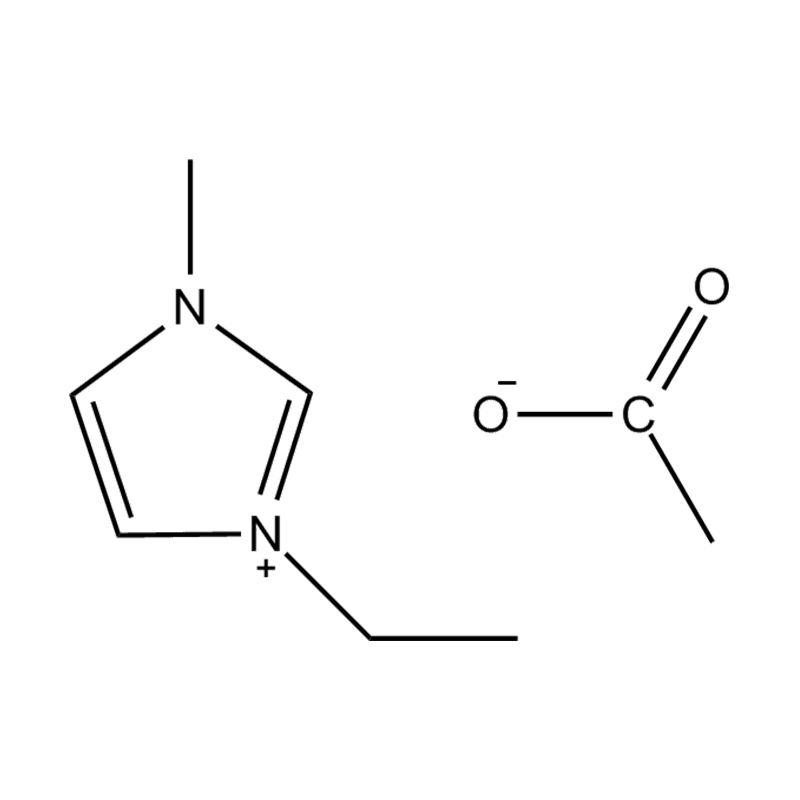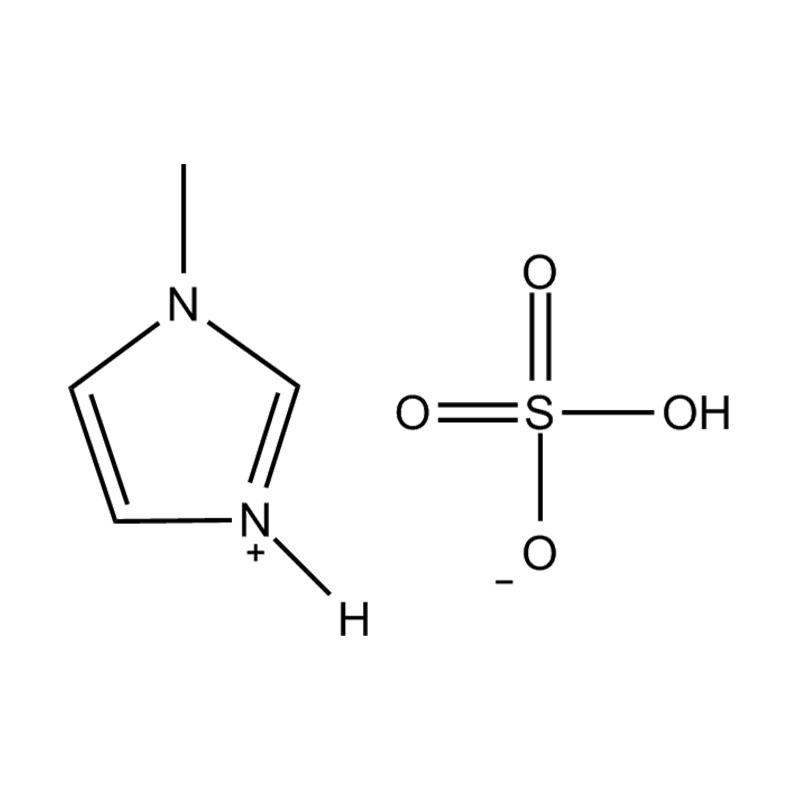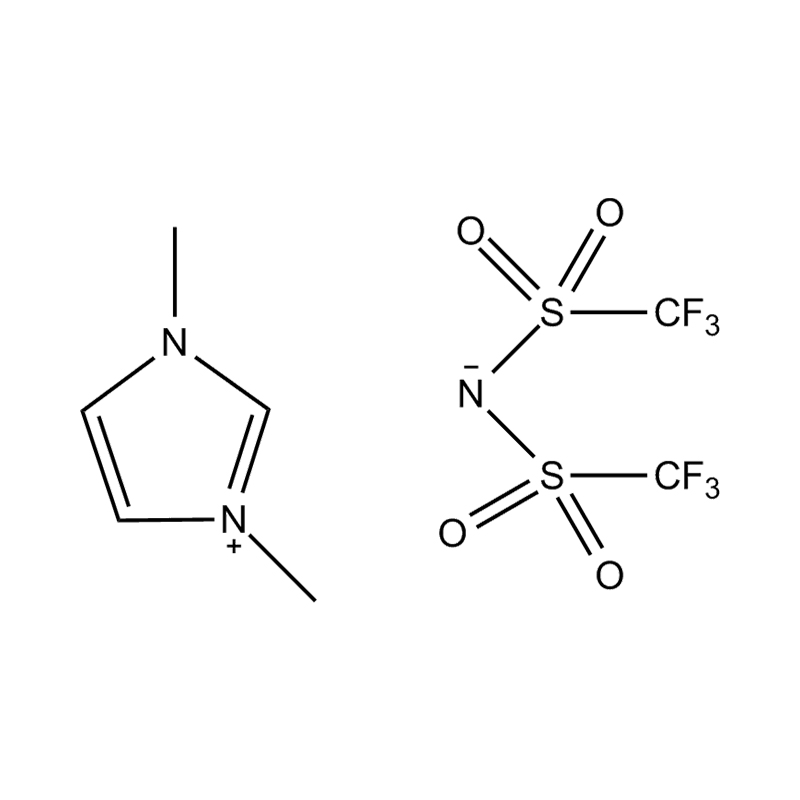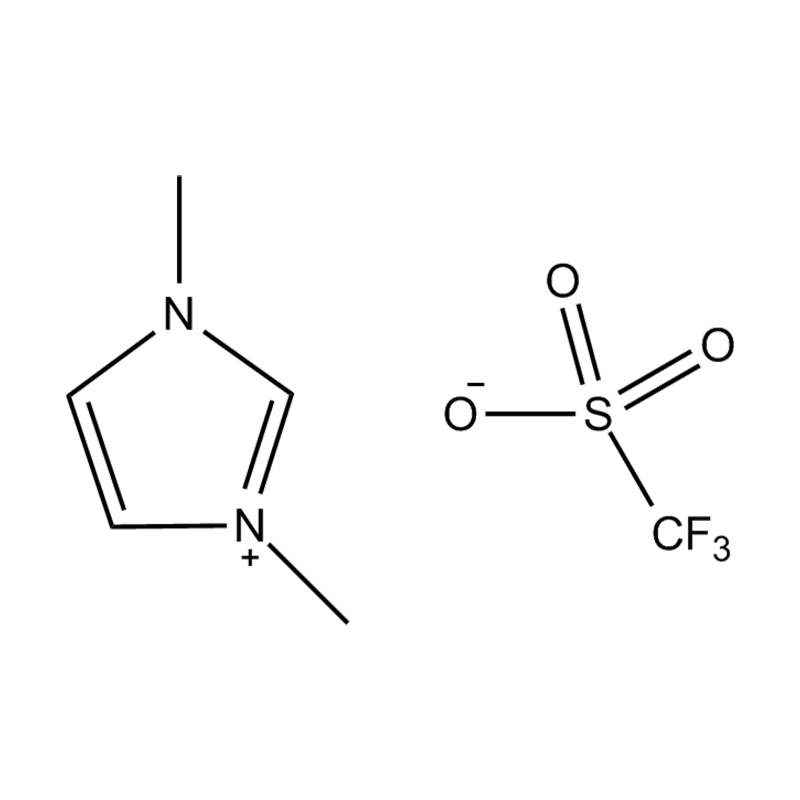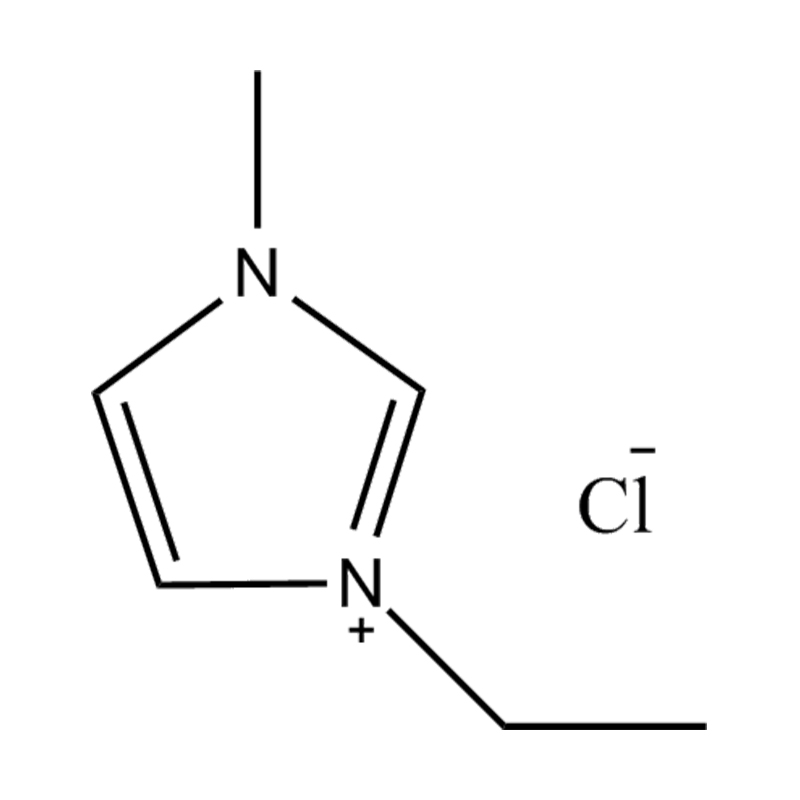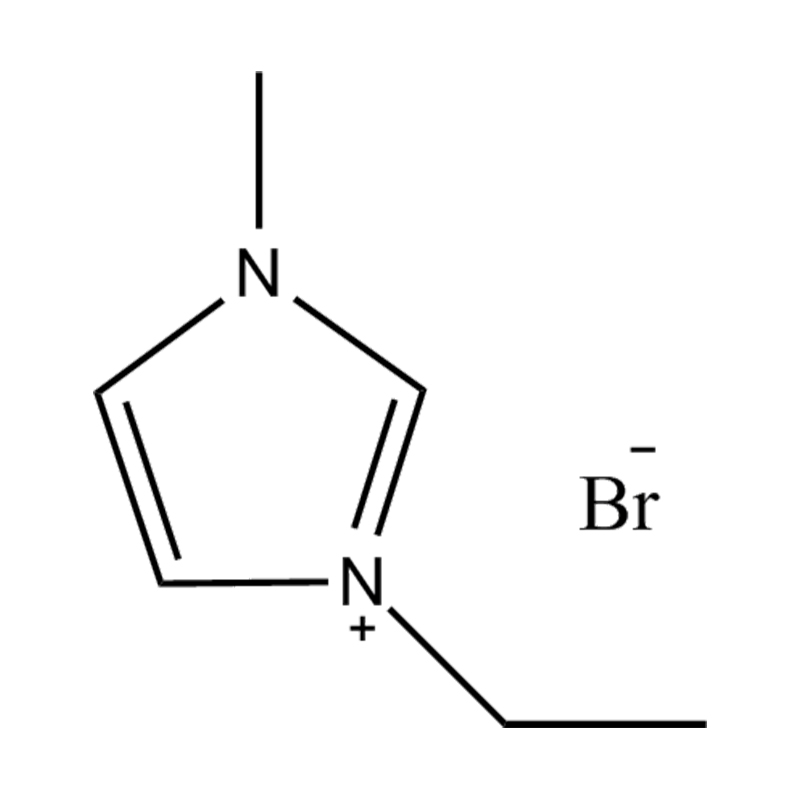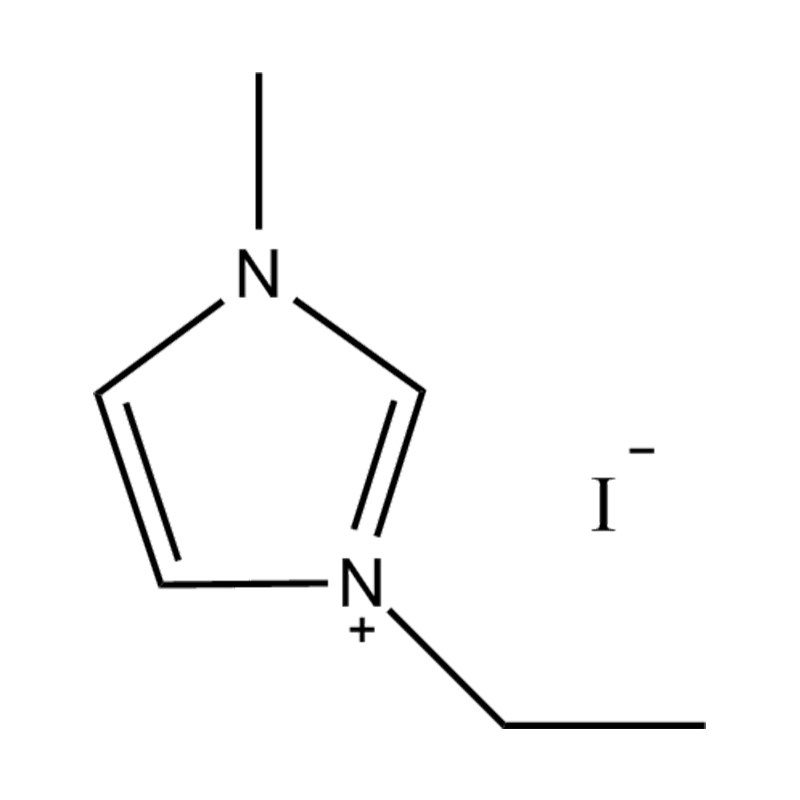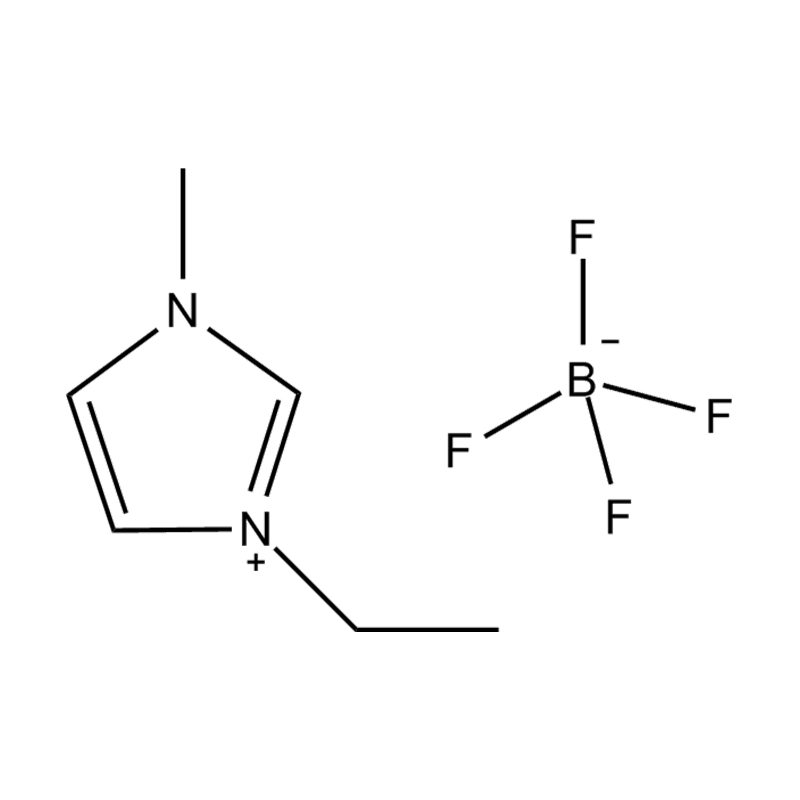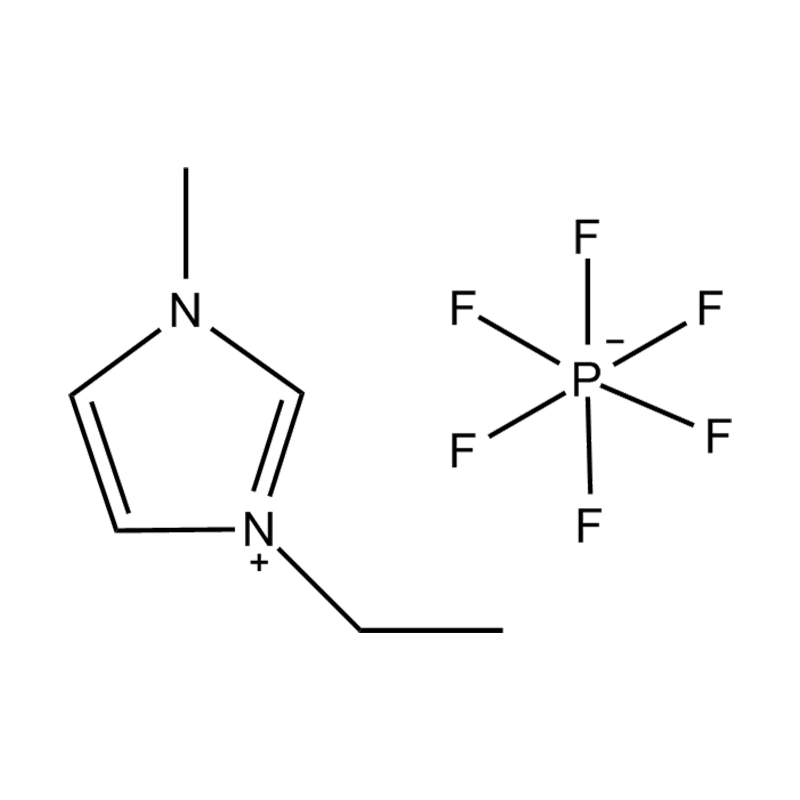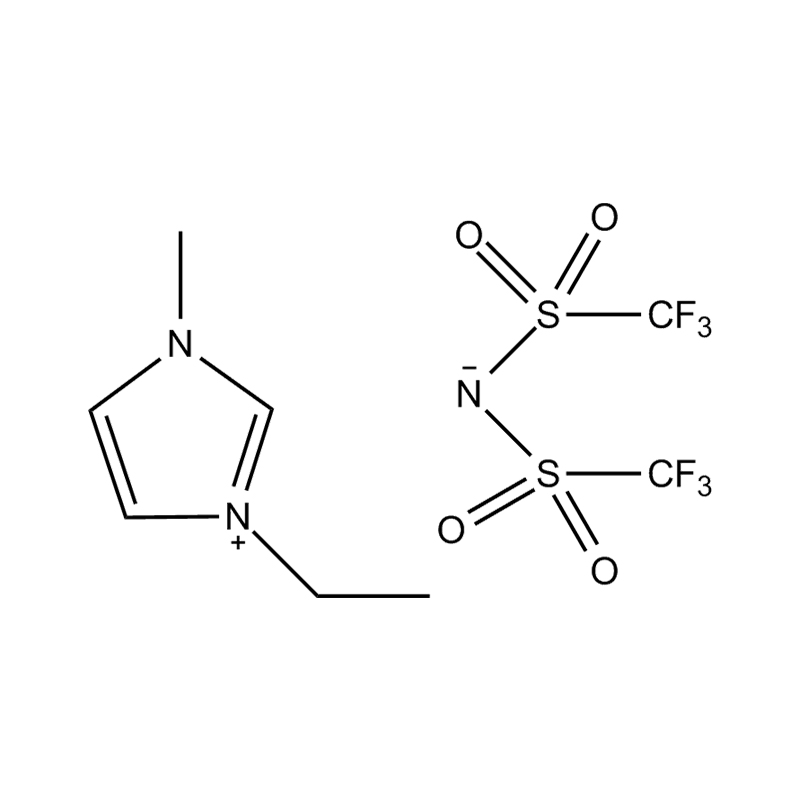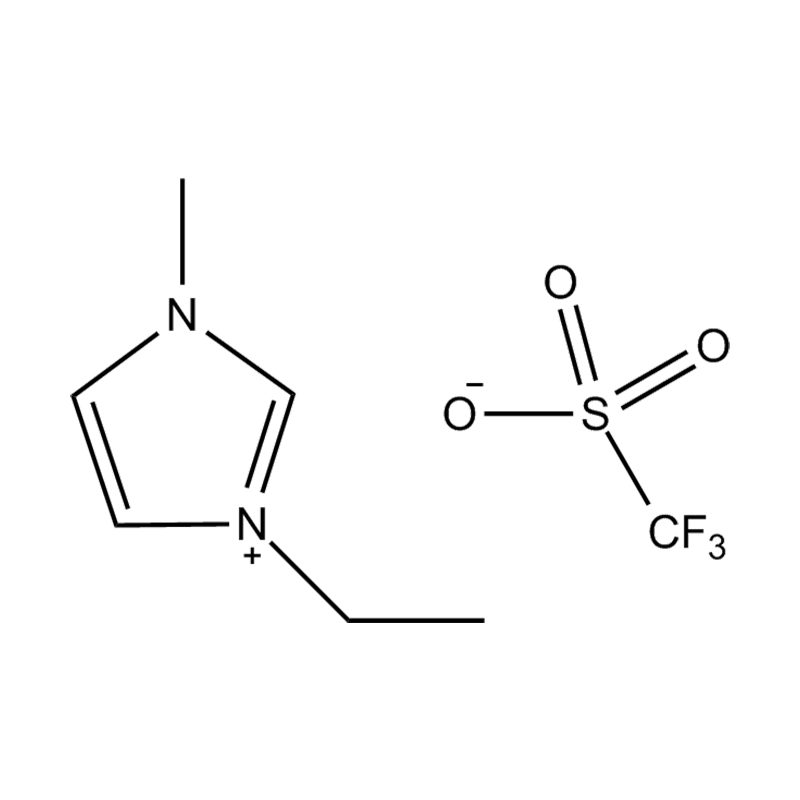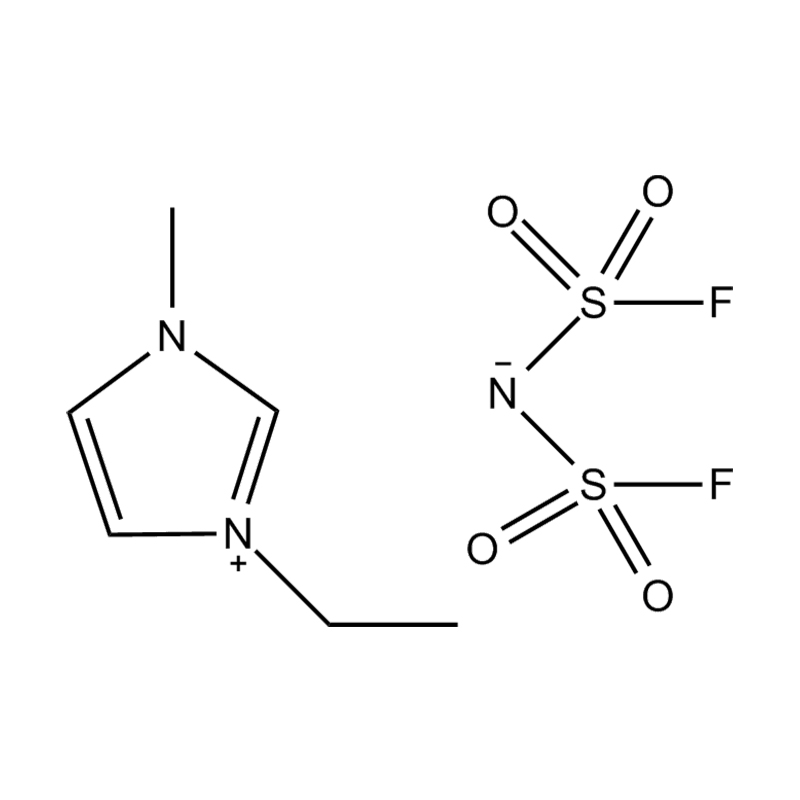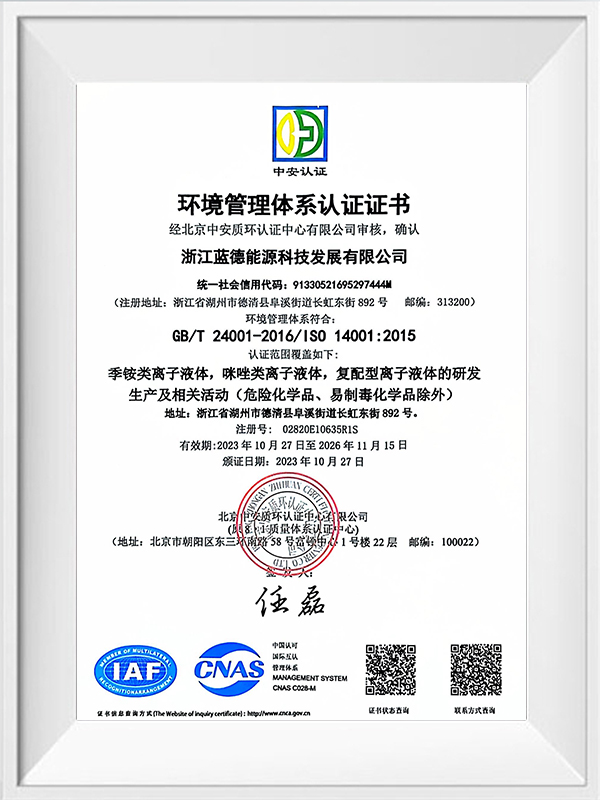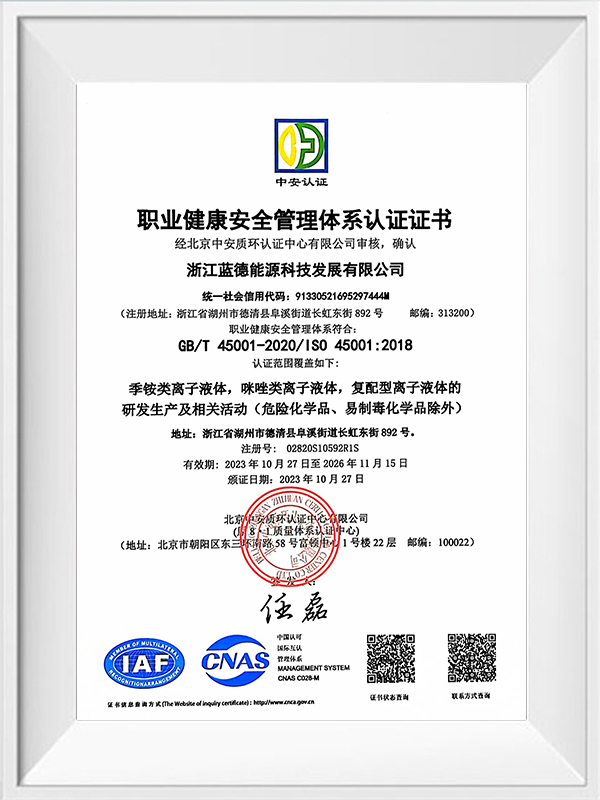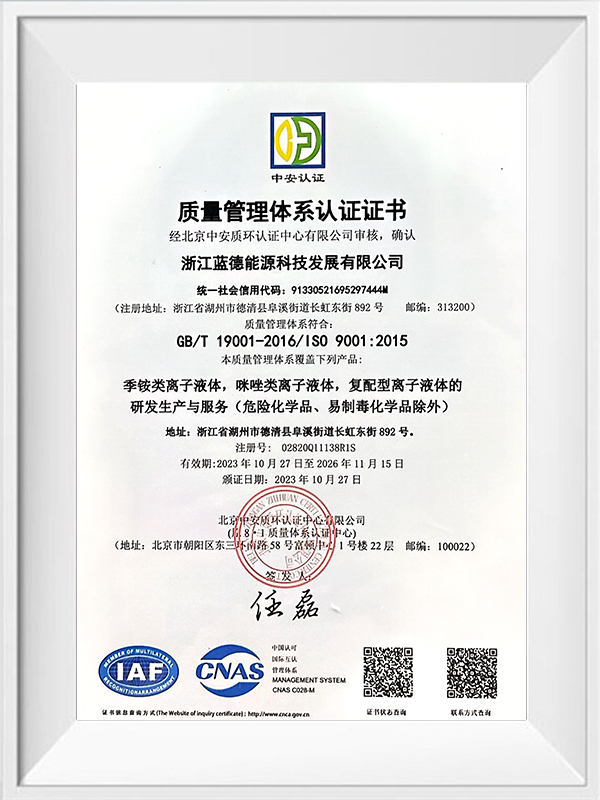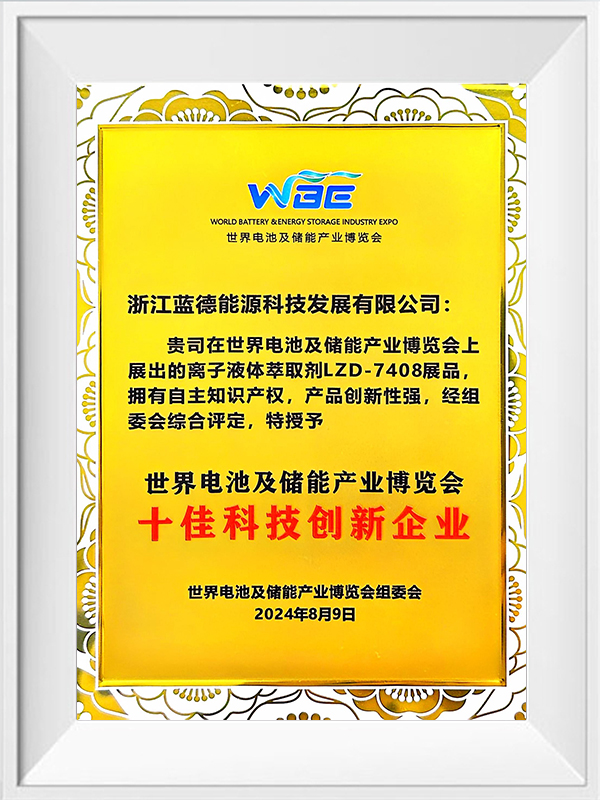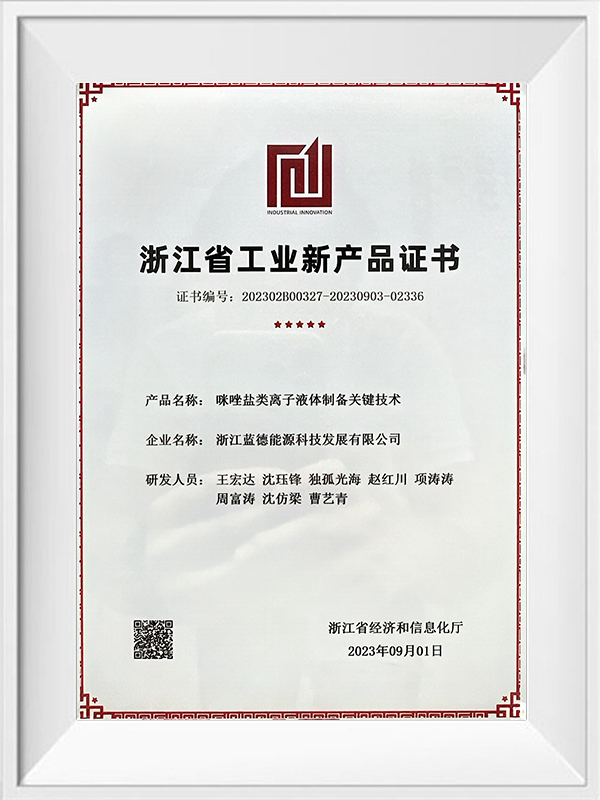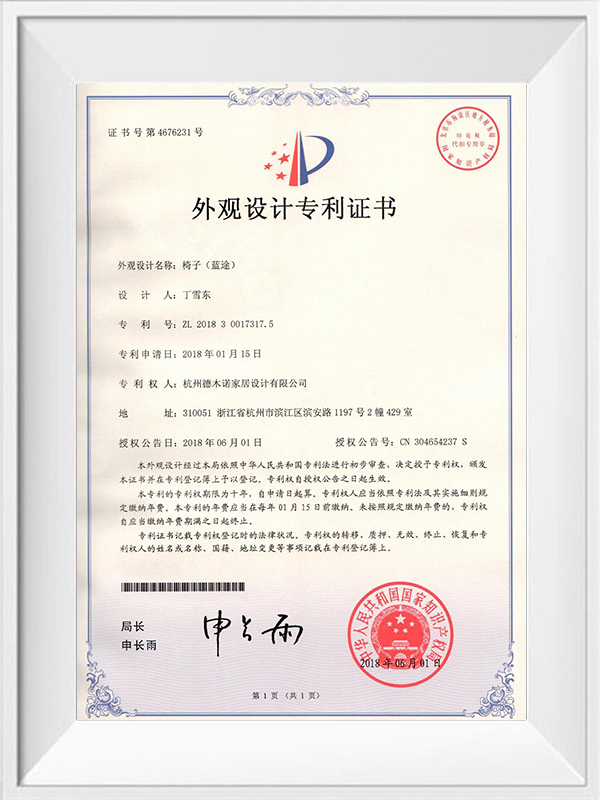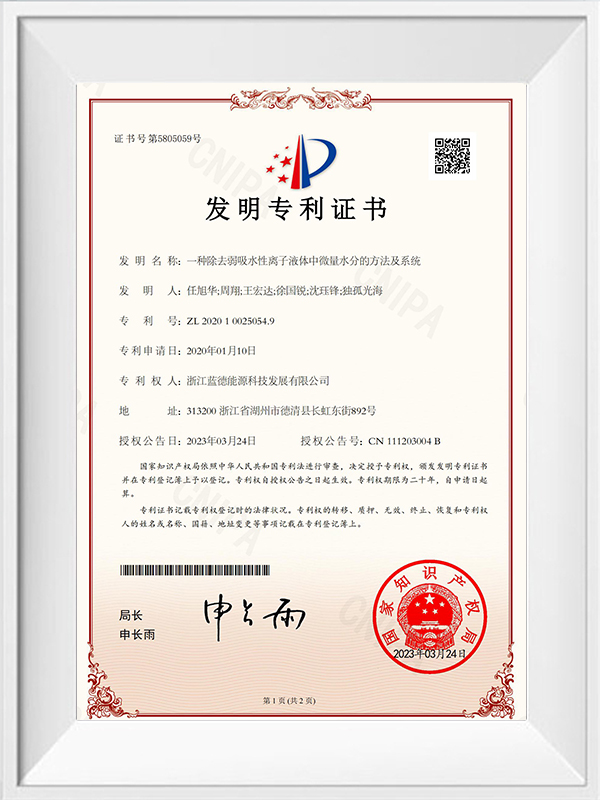1-Ethyl-3-methylimidazolium acetate (commonly abbreviated as EMIM OAc) is a room-temperature ionic liquid (RTIL) with the molecular formula C8H14N2O2 and a molecular weight of 170.21. It typically appears as a colorless to pale yellow transparent liquid with a certain level of viscosity. EMIM OAc is stable in air but is highly hygroscopic, meaning it readily absorbs moisture from the environment. Therefore, it is generally necessary to be stored and used in airtight conditions to prevent water contamination. Its melting point is approximately -45°C, boiling point exceeds 300°C, and its density at 25°C is about 1.10 g/mL. The flash point is around 113°C, making it a relatively safe but mildly flammable organic ionic liquid.
Due to its unique physical and chemical properties, EMIM OAc is widely used in green chemistry and materials science, particularly for its excellent ability to dissolve biomass. It is known as one of the most effective ionic liquids for dissolving natural polymers such as cellulose and lignin. EMIM OAc is commonly used for lignocellulosic biomass pretreatment, enzymatic degradation, and as a reaction medium in various organic processes, making it well-suited for green synthesis and environmentally friendly applications. Additionally, it has been applied in electrochemistry, battery electrolytes, CO₂ absorption, and catalytic reaction systems, demonstrating good environmental compatibility and high dissolution efficiency. In laboratory settings, EMIM OAc is typically supplied at high purity levels, usually above 98% (HPLC). To maintain its best performance, we recommend to store EMIM OAc in a dry, cool, and well-ventilated environment.
In terms of safety, although EMIM OAc is considered more environmentally friendly compared to traditional organic solvents, proper protective measures are still required during handling to avoid inhalation of vapors or direct contact with skin and eyes. Due to its relatively low flash point, it should be kept away from high temperatures and open flames, and it should always be used in well-ventilated areas.
The Need for Advanced Energy Storage Solutions With the growing demand for portable electronics, electric vehicles (EVs), and renewable energy systems, energy storage technologies like batteries and supercapacitors are b...
READ MORE

 English
English Deutsch
Deutsch Español
Español 中文简体
中文简体


